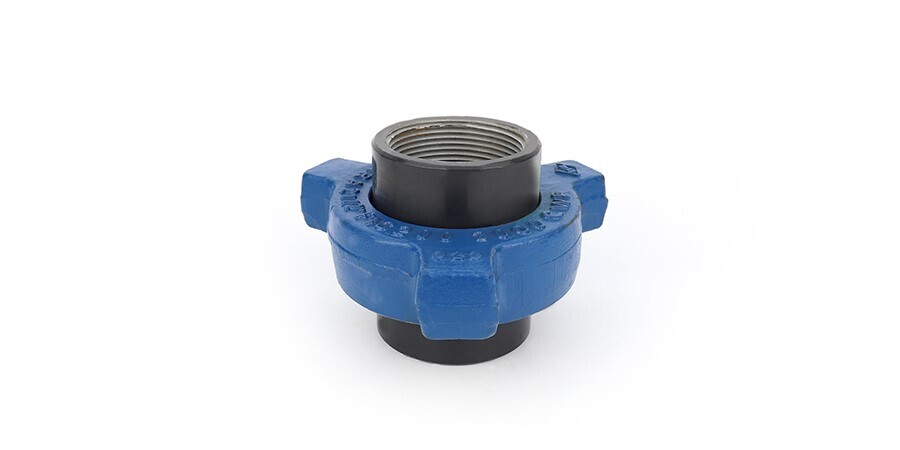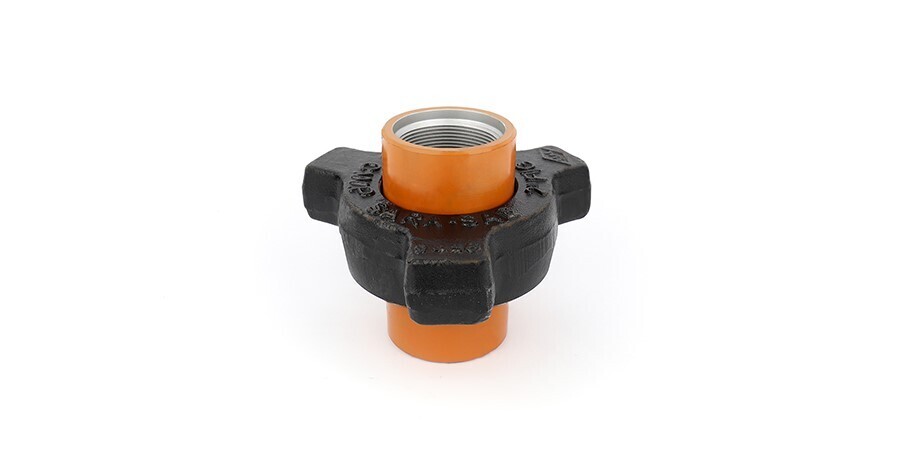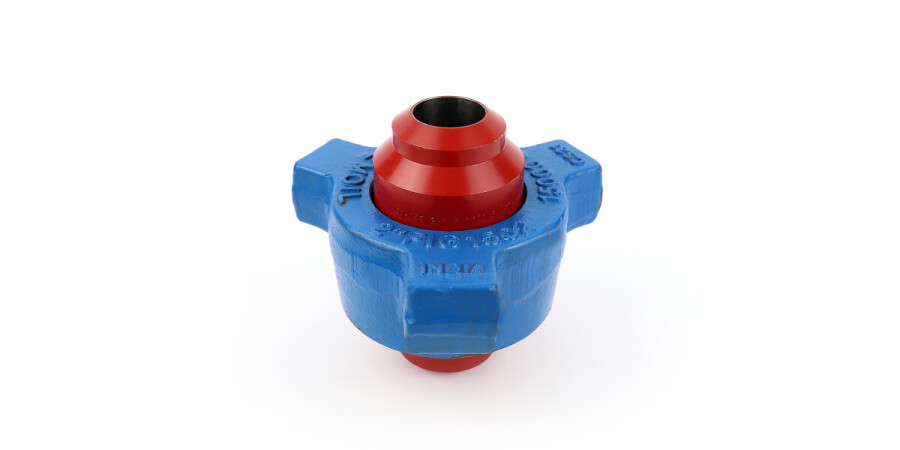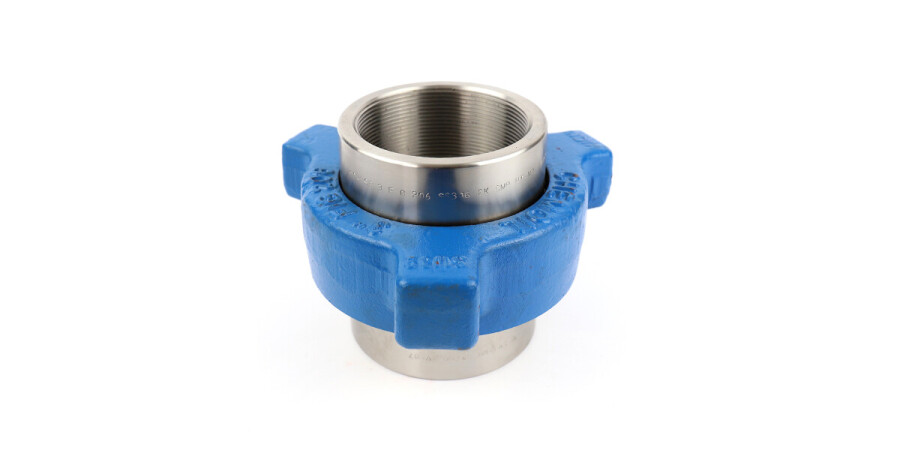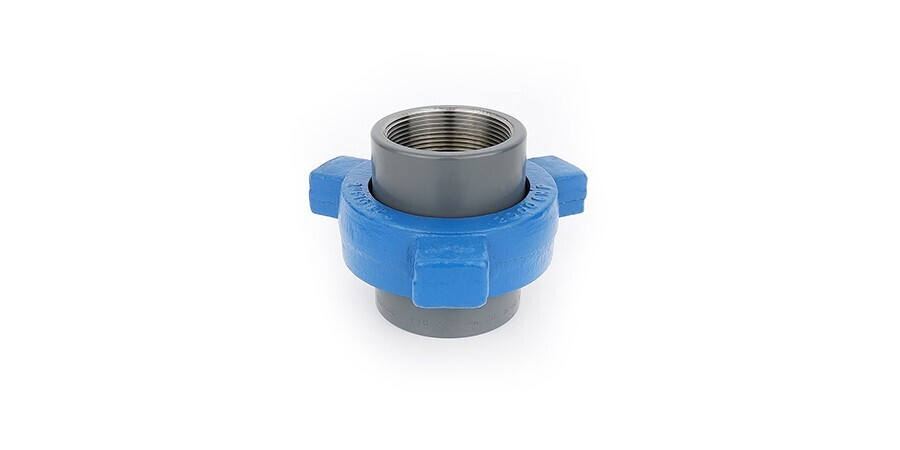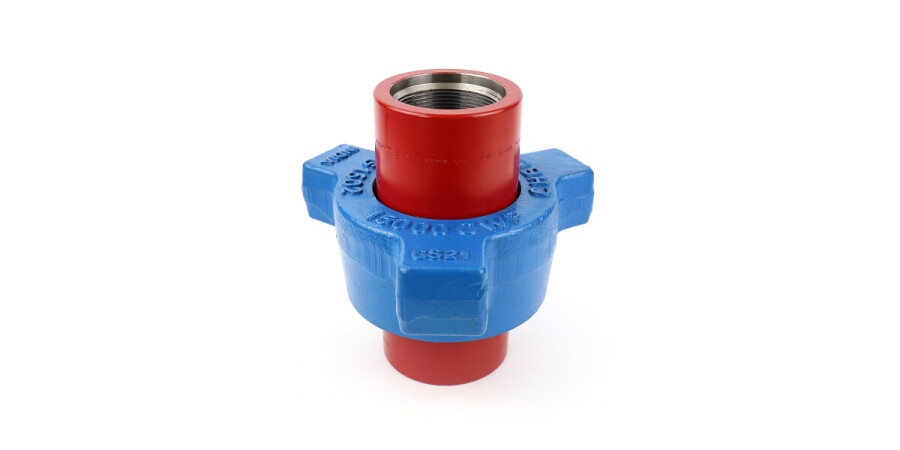To read hammer union pressure ratings, identify the union's pressure class, such as 1,000 to 10,000 PSI, which indicates maximum capacity. Ensure the chosen union fits your specific pressure and environmental needs. Look at the materials—steel for high-pressure strength, stainless steel for corrosion resistance, or brass for flexibility. Understand connections like threaded or butt-welded for secure sealing. Check pressure gauges marked in PSI to indicate safe ranges and monitor them regularly to maintain system integrity. Keeping these points in mind will not only ensure safety but also provide a deeper understanding of hammer union selections and systems.
Understanding Hammer Unions
Hammer unions are critical components in the oil and gas industry, designed to connect pipes and equipment securely. You'll find that understanding the different hammer union types is essential for ensuring the safety and efficiency of operations. When you're out in the field, or even just learning about these systems, it's important to recognize that there are several types, each tailored for specific applications and pressure requirements.
You'll typically encounter three main hammer union types: Figure 100, Figure 200, and Figure 206, among others. Each type is distinguished by its connection methods and pressure capabilities, which are vital to matching the right union to your system's needs. The Figure 100 is generally used for low-pressure applications, while the Figure 200 and 206 handle medium to high pressures, respectively.
To connect them, you'll need to know that hammer unions use threaded or butt-weld connections, providing a reliable seal that's crucial in your demanding environment. By selecting the appropriate hammer union type and connection method, you're not just participating in a task; you're joining a community of professionals who prioritize safety and efficiency in every operation.
Importance of Pressure Ratings
As you explore the various types of hammer unions, it's important to grasp why pressure ratings matter so much in the selection process. Understanding the pressure rating significance is key to ensuring safety and efficiency in your operations. When you choose a hammer union with the appropriate pressure rating, you're not just following a guideline; you're safeguarding your team and equipment. This choice creates a sense of belonging within your crew, knowing that everyone is working with the right tools.
Pressure rating impacts every aspect of your operation. It determines whether a hammer union can withstand the pressures it will encounter in the field. Using a union with an inadequate pressure rating can lead to equipment failure, costly downtime, and potential safety hazards. In contrast, selecting the right pressure rating ensures reliability and smooth operations, making your team feel secure and empowered.
Key Specifications Explained
When choosing the right hammer union, certain key specifications can't be overlooked. You're part of a community that values precision and safety, so understanding these specifications ensures you make informed decisions. One of the first things to consider is the pressure testing capacity. Hammer unions are designed to withstand specific pressure levels, which are verified through rigorous testing. Knowing this helps you select an option that's reliable and safe for your needs.
Next, pay attention to industry standards. These standards ensure that the hammer unions you choose are compatible with other equipment and meet safety requirements. They guide the design, material selection, and testing procedures, providing assurance and consistency across projects. By aligning with these standards, you join a network of professionals who prioritize quality and reliability.
Also, consider the type of connection. Different hammer unions have varying connection types, each suited for specific applications. This affects the sealing capability and ease of use. By understanding these key specifications, you're not just choosing a tool; you're becoming part of an informed and skilled community that takes pride in getting things right.
How to Read Pressure Numbers
Understanding pressure numbers on hammer unions can feel like deciphering a new language, but it's crucial for ensuring safety and functionality. When you're part of a team relying on accurate pressure measurement, knowing how to read gauges is essential. Begin by locating the gauge on the hammer union. It's typically marked with numbers representing the pressure levels in psi (pounds per square inch) or bar. These numbers are the key to understanding how much pressure the union can handle.
As you read the gauge, make sure you're familiar with the units being used. Whether it's psi or bar, consistency is important. A gauge will often have both, but focus on the unit your team uses to avoid confusion. Also, pay attention to the needle's position. It should be within the safe range indicated on the gauge. If it's edging towards the maximum, it's time to reassess your setup.
Common Pressure Classes
Hammer unions are categorized into various pressure classes, each designed to withstand specific pressure levels. Understanding these pressure class types is essential for ensuring union performance meets your operational needs. Familiarizing yourself with these classes helps you choose the right hammer union that seamlessly fits into your equipment lineup, enhancing both safety and efficiency.
Let's delve into the common pressure classes you might encounter. The most frequently used include 1,000, 2,000, 3,000, 6,000, and 10,000 PSI classes. Each class reflects the maximum pressure the union can handle, impacting its performance and suitability for different applications. For example, a 1,000 PSI union is ideal for low-pressure systems, while a 10,000 PSI union is more suited for high-pressure environments, such as in the oil and gas industry.
Materials and Their Impact
The materials used in hammer unions significantly impact their durability and performance under pressure. When you're choosing a hammer union, it's important to understand how different material types influence these performance factors. Steel and stainless steel are common choices, each offering unique benefits. Steel is known for its strength, making it a reliable option for high-pressure applications. On the other hand, stainless steel resists corrosion, which is crucial in harsh environments where longevity is a priority.
You might also encounter hammer unions made from brass or other alloys. These material types offer specific advantages, like enhanced resistance to wear or improved flexibility. As you consider your options, remember that the choice of material directly affects how well the union withstands the conditions it faces.
Selecting the Right Union
When selecting the right hammer union, start by considering the specific pressure and environmental conditions your application will face. You want to ensure everyone involved feels secure and connected, knowing the union will hold up under pressure. Familiarize yourself with different union types. Each type is designed for unique scenarios, such as low-pressure applications or high-pressure environments. The materials and designs vary, ensuring that there's a union that fits precisely what you need.
Next, dive into connection methods. These determine how the union will integrate with your existing systems. Some unions use threaded connections, while others rely on butt welds or socket welds. Choose a method that not only meets your technical requirements but also aligns with industry norms and your team's expertise. By doing so, you'll foster a sense of community and collaboration among your peers, as everyone speaks the same technical language and works towards a common goal.
Ultimately, selecting the right union isn't just about technical specifications. It's about creating a cohesive and reliable system that everyone trusts. By carefully considering union types and connection methods, you'll contribute to a shared sense of achievement and safety.
Safety Considerations
Ensuring safety when using hammer unions is paramount. You're part of a community that values protection and teamwork, and understanding safety considerations is key. First, always wear personal protective equipment (PPE) such as gloves, safety glasses, and steel-toed boots. PPE is not just a requirement; it's a symbol of our shared commitment to safety.
Before starting any task, ensure everyone is aware of the emergency procedures. Knowing what to do if something goes wrong fosters a sense of trust and solidarity among your colleagues. It's essential to have a clear plan, including knowing where the emergency shut-off valves are and how to use them.
When working with hammer unions, be mindful of pressure ratings and specifications. Using the correct union for your application prevents accidents, protecting you and your team. Never compromise on checking compatibility—it's a practice that shows you care about everyone's safety.
Lastly, communicate openly with your team. Share observations and encourage questions. Your voice matters, and contributing to a culture of safety strengthens the bonds within your group. Remember, safety is not just a practice; it's a shared responsibility that connects us all.
Maintenance and Inspection Tips
To keep hammer unions in optimal condition, regular maintenance and inspection are essential. You want to ensure the safety and reliability of your equipment, and preventive maintenance plays a crucial role in achieving that. By being proactive, you not only extend the lifespan of your hammer unions but also contribute to a safe and efficient work environment where everyone feels part of a team working towards a common goal.
Start with a comprehensive inspection checklist. This will guide you through each step, ensuring you don't miss any critical components. Check for signs of wear, corrosion, or any physical damage. Look closely at the sealing surfaces and threads, as these areas are particularly vulnerable. If you spot any issues, address them immediately to prevent further damage.
Regularly clean and lubricate the unions to maintain their functionality. Make sure to follow the manufacturer's guidelines for cleaning agents and lubricants. Also, keep an eye on the pressure ratings and ensure they're not exceeded during operations. By sticking to a routine maintenance schedule, you're not just maintaining equipment; you're fostering a sense of pride and responsibility within your team.
Frequently Asked Questions
How Do Pressure Ratings Affect the Lifespan of Hammer Unions?
You'll find pressure rating impacts a hammer union's lifespan significantly. Lifespan considerations mean choosing the right rating for your needs. Stay informed and you'll ensure reliability and safety, strengthening your place in the community of knowledgeable users.
Are There Color Codes for Different Pressure Classes in Hammer Unions?
Yes, you'll find color coding for pressure classification in hammer unions. These colors help you instantly recognize the pressure class, ensuring you stay connected with industry standards and your team. Embrace this shared knowledge for safe operations.
Can Hammer Unions Be Used in Extreme Temperature Environments?
You can use hammer unions in extreme temperatures by selecting the right materials. Temperature resistance is crucial, so choose unions designed for harsh conditions. Join others who trust these reliable solutions to ensure safety and performance in challenging environments.
What Are the Common Signs of Wear in Hammer Unions?
When you perform a visual inspection, look for cracked sealing surfaces, worn threads, and corrosion. Consistent maintenance practices help identify these signs early, ensuring reliability and safety. Remember, staying vigilant keeps you part of the trusted team.
How Do Hammer Union Pressure Ratings Vary Across Manufacturers?
You'll notice hammer union pressure ratings can differ by manufacturer. It's crucial to check manufacturer specifications and ensure thorough pressure testing. This way, you're part of an informed community that values safety and reliability in the field.
Autor
Toni Mielikäinen
Especialista técnico
Hosemarket
ask@hosemarket.com
Toni es uno de los maestros en mangueras más profundos de los países nórdicos, un experto experimentado cuyas manos han elaborado miles de soluciones para todas las industrias nacionales. Con más de 20 años de experiencia en cuestiones de mangueras y acoplamientos, su pericia beneficia a todo el mundo, desde las grandes instalaciones de producción hasta las pequeñas fábricas de cerveza.


